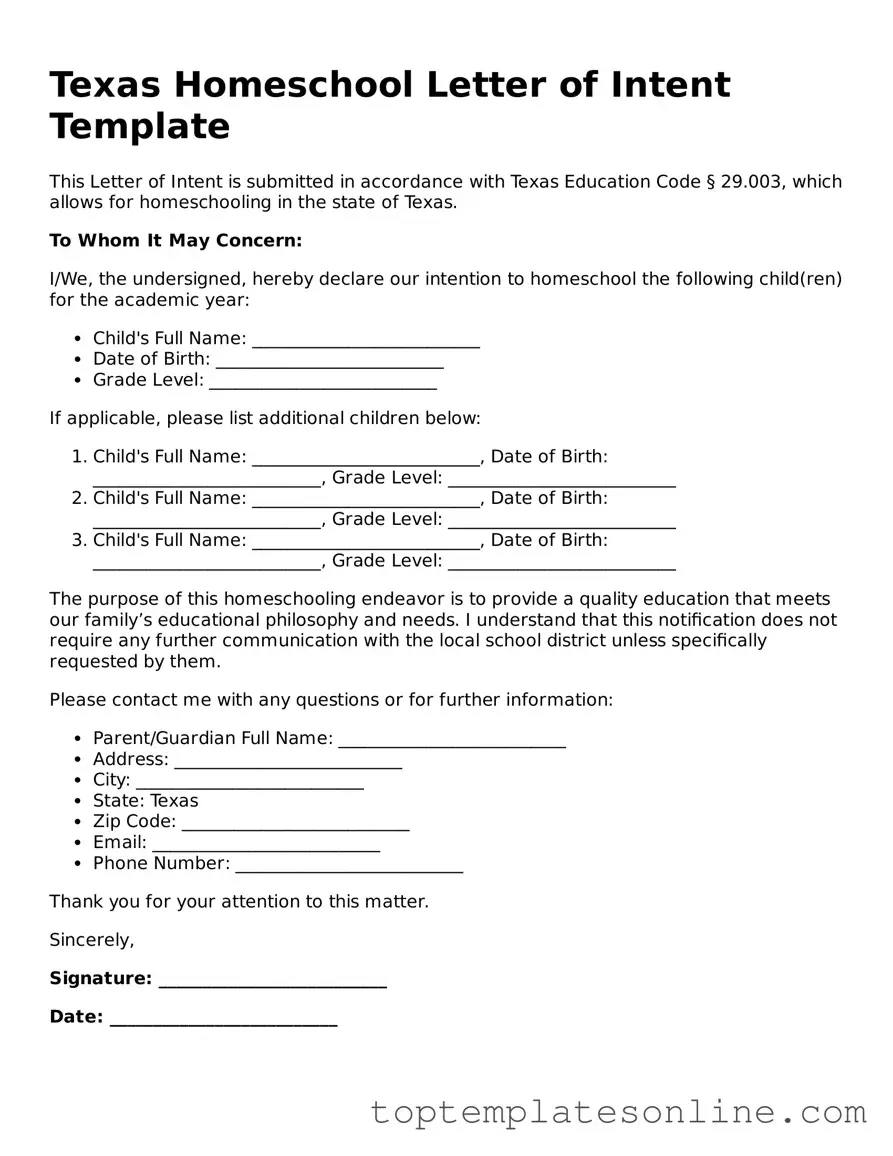Blank Homeschool Letter of Intent Template for Texas State
The Texas Homeschool Letter of Intent is a formal document that parents submit to inform their school district of their decision to homeschool their children. This letter serves as an essential step in the homeschooling process, ensuring compliance with state regulations. Understanding how to properly complete and submit this form can make the transition to homeschooling smoother and more organized for families.
Customize Homeschool Letter of Intent Here
